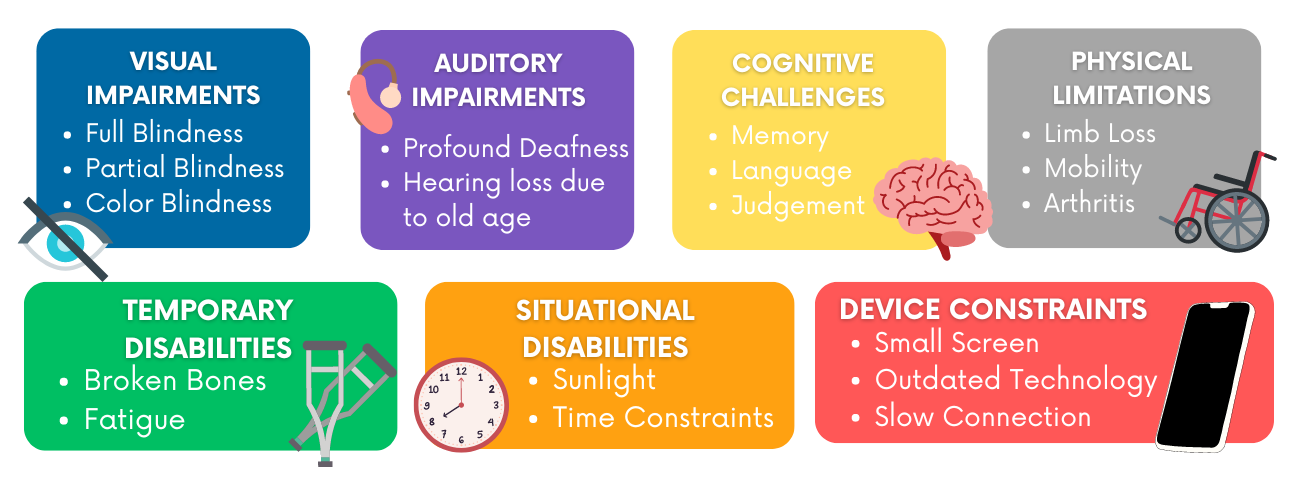Global Accessibility Awareness Day (GAAD) is celebrated annually on the third Thursday of May, this year GAAD is on May 16th, marking its 13th anniversary. GAAD aims to raise awareness and educate individuals about equality, accessibility, and inclusion for the over one billion people worldwide with disabilities and impairments. This day highlights the importance of accessible technology to ensure access to digital content for all individuals.
The Origins of GAAD
Global Accessibility Awareness Day (GAAD) was first celebrated in 2011 when a blog post was written by web developer Joe Devon. He encouraged developers to come together to raise awareness and set global standards for closing the accessibility gap. Jennison Asuncion, an accessibility expert from Toronto, stumbled upon Devon's blog post by chance after seeing a tweet about it while browsing the internet. Inspired by Devon's vision, Jennison Asuncion collaborated with Joe Devon to co-create GAAD.
Understanding Inclusive Design
Digital accessibility refers to enabling individuals with disabilities or impairments to access and interact with digital applications, such as websites and mobile apps. According to a Pew Research Center survey of U.S. adults, 62% of adults with a disability say they own a desktop or laptop computer, compared with 81% of individuals without a disability. While activities like browsing the internet, catching up on social media, or texting on mobile devices feel natural to many, accessibility barriers create challenges for millions of people with disabilities, making it challenging to use some forms of technology or deterring them altogether. According to WebAIM, over 96% of the world’s top one million web pages are not accessible. This equates to less than 4% of the world’s most popular websites are accessible to people with disabilities.
Accessibility on the web is crucial, yet many disabled web users encounter challenges accessing the websites and content they need. The World Wide Web Consortium (W3C) actively campaigns for the creation of websites, tools, and technologies that are designed in a way that is accessible for people with disabilities. The Americans with Disabilities Act (ADA) is a civil rights law that prevents discrimination based on disability. When designing ADA accessible websites, developers and organizations must consider a wide range of impairments that may affect web access. These disabilities encompass permanent, temporary, or situational limitations, as well as challenges related to technology or internet connectivity.
Types of Disabilities:
• Visual - Full blindness or partial blindness and other visual impairments including color blindness, cataract, or glaucoma
• Auditory – Different degrees of hearing loss, from deafness or loss of hearing from old age
• Cognitive – Impairments that impact memory, language, thinking, or judgement
• Physical – Limitations that affect mobility and navigation
Additionally, temporary disabilities such as broken bones or fatigue, situational limitations such as bright sunlight, time constraints or independent living, device constraints such as small screens or outdated technology, and internet-related factors like slow connection are all factors that need consideration. Each of these impairments highlights the range of barriers that many individuals face when trying to navigate and use digital technologies effectively.

Ensuring Digital Accessibility
Geographic Solutions, as a software development firm, understands the importance of creating accessible web applications and is dedicated to ensuring ease-of-use for all users. Ensuring accessibility is a core aspect of our software development process. All our software is designed to comply with the Americans with Disabilities Act (ADA). Our team utilizes a myriad of accessibility tools to mimic color impairments, test alternative text for images, check screen reader order, evaluate keyboard navigation, and more. Our ADA Compliance Team is made up of many people, but it was important to our company to employ individuals with various impairments as part of this process. We invite you to enjoy this video on our ADA Compliance processes.
Our commitment to accessibility goes beyond compliance, we believe that empathy drives us to find ways to include everyone. We prioritize accessibility to empower workforce staff and job seekers of all abilities. Our accessible technology expands job opportunities for individuals with disabilities and equips workforce agencies with the effective tools that they need to provide equal service. As we celebrate GAAD, Geographic Solutions remains dedicated to fostering digital accessibility and creating an inclusive workforce landscape that is diverse and inclusive. Looking ahead, we are dedicated to ongoing improvement in accessibility for our software, ensuring that it evolves to meet the needs of all users.